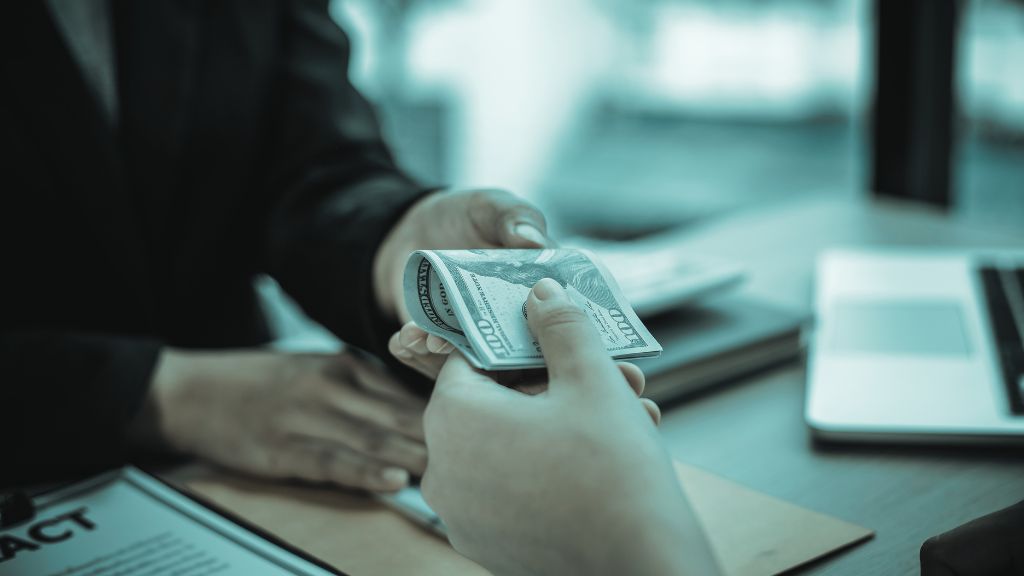Have you ever noticed that it’s easier to swipe your card or tap your phone than to hand over cash for a purchase? Many people feel less concerned about spending money when they don’t actually see or touch it. Digital payments, credit cards, and mobile wallets have made shopping incredibly convenient, but they can also lead to overspending. When you’re not physically counting your cash, it’s easier to lose track of how much you’re spending. This can result in higher bills and less control over your finances.
In this blog, we’ll explore why are people more likely to overspend when they don’t pay with cash and how digital payments make it more tempting to spend more than planned.
The Psychology of Spending with Cash
When you pay with cash, you’re more aware of the transaction. Physically handing over money creates a tangible loss, which can make you think twice before spending. You see the money leaving your wallet, and this makes the purchase feel more “real.” Each time you part with your hard-earned cash, you’re reminded of its value. Because of this, you’re more likely to pause and ask yourself, “Is this really worth it?”
This mental check doesn’t happen as easily with cards or digital payments. Instead of feeling the weight of losing money, you’re simply swiping a card or clicking a button, which makes it easier to spend without thinking.
Also read: How Does Having A Budget Help You Avoid The Traps Of Digital Marketing?
Why Are People More Likely To Overspend When They Don’t Pay With Cash?
Digital Payments: Out of Sight, Out of Mind
One reason people overspend when they don’t use cash is because digital payments remove the physical act of parting with money. When you tap your card or use a mobile payment app, you don’t see or feel the money leaving your account. This creates a disconnect between the act of spending and the money itself. It’s almost like the money is invisible.
In contrast, when you pay with cash, you’re constantly reminded of how much you have left. You can see your wallet getting thinner, which can make you stop and reconsider unnecessary purchases. With digital payments, it’s easy to forget about how much you’re spending until you check your bank statement later on.
The “Pain of Paying” Effect
Studies have shown that paying with cash triggers what is known as the “pain of paying” effect. This is the discomfort people feel when they part with their money. The more painful a transaction feels, the less likely you are to spend money on non-essential items.
However, when you use a credit card, debit card, or mobile payment, this pain is reduced. Swiping a card or clicking a button feels less significant than handing over cash. This reduced pain can make it easier to spend more than you originally intended.
For example, imagine you’re at a restaurant. If you’re paying with cash, you might be more conscious of how much you’re spending on extras like dessert or drinks. But if you’re paying with a card, it’s easier to add those extras without feeling the immediate impact. In the moment, the transaction doesn’t feel as real, which can lead to overspending.
Credit Cards: Buy Now, Pay Later
One of the biggest reasons people overspend when they don’t use cash is the “buy now, pay later” mentality that comes with credit cards. When you use a credit card, you’re not paying for the item right away. Instead, you’re borrowing money and paying it back at a later date, often with interest. This delay between the purchase and the payment makes it easier to spend money without fully considering the consequences.
For instance, when you pay with cash, you know that the money is gone immediately. You feel the loss and may think twice about making future purchases. But with a credit card, the payment is deferred, so you don’t feel the financial hit until the bill comes. This can lead to a false sense of security, making it easier to overspend on things you don’t really need.
The Convenience of Digital Payments
Another reason people overspend without using cash is the sheer convenience of digital payments. With just a tap, swipe, or click, you can complete a transaction in seconds. This convenience makes it easier to make impulsive purchases, especially when shopping online.
Online stores and apps are designed to make spending as easy as possible. Features like one-click purchases, saved payment information, and automatic subscriptions all make it effortless to buy things without even thinking about it. This ease of spending can quickly add up, leading to overspending on items that might not be necessary.
Rewards Programs: Encouraging Spending
Many credit cards and digital payment apps offer rewards programs that encourage people to spend more. These programs offer points, cashback, or other incentives for every dollar spent. While rewards programs can be beneficial if used wisely, they can also tempt people to make unnecessary purchases just to earn points.
For example, you might justify buying something you don’t need because you’ll earn reward points or cashback. In the long run, these small purchases can add up and lead to overspending, even though you’re trying to save or earn rewards.
Subscription Services and Automatic Payments
Another factor that contributes to overspending is the rise of subscription services and automatic payments. With services like streaming platforms, online memberships, and product subscriptions, payments are made automatically from your account each month. Because these payments are automated, you might not notice how much you’re spending over time.
When you don’t use cash, it’s easier to forget about these ongoing expenses. Over time, you may accumulate multiple subscriptions that you don’t even use, leading to wasted money. Since the payments happen automatically, there’s no moment where you’re actively deciding to part with your money, making it easier to overspend without realizing it.
Tips to Avoid Overspending Without Cash
While digital payments and credit cards are convenient, there are ways to avoid overspending:
- Set a Budget: Having a clear budget can help you stay on track and avoid spending more than you can afford. Make sure to track both your cash and digital payments so you know exactly how much you’re spending.
- Use Cash for Certain Expenses: If you find yourself overspending, try using cash for specific categories, like groceries or entertainment. This can help you become more mindful of your spending.
- Track Your Spending: Keep a record of your expenses, whether they’re cash or digital payments. There are many apps available that can help you track your spending in real time, making it easier to stay within your budget.
- Limit Credit Card Use: Try to use your credit card only for essential purchases, and pay off the balance in full each month. This can help you avoid interest charges and keep your spending in check.
- Turn Off Automatic Payments: Review your subscription services and automatic payments. Cancel any services you no longer use and turn off automatic payments to regain control over your finances.
- Pause Before Purchases: Before making any purchase, especially with a card or mobile payment, take a moment to think. Ask yourself if the purchase is necessary or if it’s just an impulse buy.
Also read: Mention Four Benefits of Participating in Local Government Elections
Conclusion
While paying with cards and digital methods is convenient, it can also make it easier to overspend. The lack of a physical exchange, the delayed impact of credit card bills, and the lure of rewards programs all contribute to higher spending. However, by being mindful of your spending habits, setting a budget, and tracking your expenses, you can avoid the overspending trap that comes with not using cash. In the end, controlling your finances is about making conscious decisions, whether you’re paying with cash, card, or phone.

